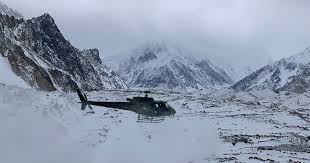
K2 stands as the world’s second-tallest summit, after Mount Everest, and some climbers consider it even more perilous. Only last month did one group become the first to successfully scale it during winter, braving dangerously thin air and temperatures that can plunge past minus 70 degrees Fahrenheit.
Daily Current Affairs Quiz 2021
‘Alpine style’ mountaineering involves ascending with only the minimum number of breaks, and without the assistance of porters.
The mountaineer carries all of his/her load, including food, equipment, tents, etc. There is no scope for acclimatisation – which may take several days at high altitudes – as climbers make a dash for the summit.
The alpine style contrasts with the ‘expedition’ or ‘siege’ style of climbing, in which climbers go from one camp to another to acclimatise.
Winter climbing is always tougher than pre-monsoon, post-monsoon and summer climbing.
Many consider alpine style to be the most aesthetically “pure” form of mountaineering.
The benefits of alpine style include spending much less time on the route, thereby reducing objective dangers such as avalanches or blizzards.
The problems encountered while alpine style climbing are related to lack of support and potentially the lack of acclimatization associated with spending less time at very high altitudes.





